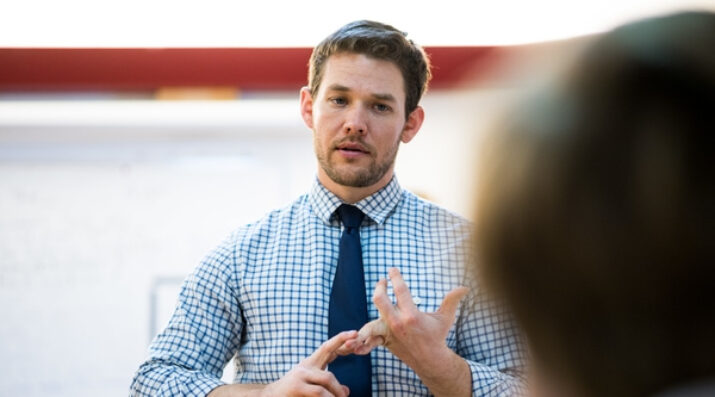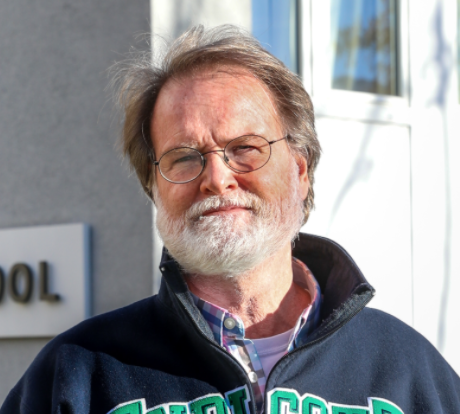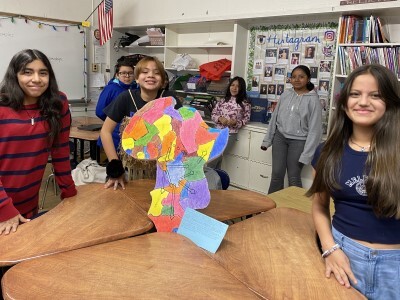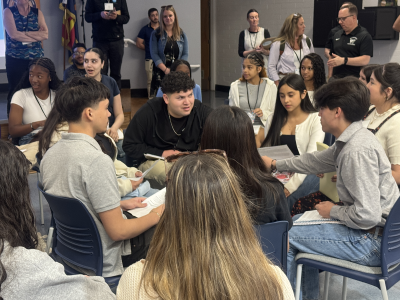In-House Professional Learning
Topics

Educators are the lead learners in schools. If they are to enable powerful, authentic, deep learning among their students, they need to live that kind of learning and professional culture themselves. When everyone is part of that experiential through-line, that’s when next generation learning thrives.
With support from their school's in-house research center, teachers are leading professional learning and innovation.
Kevin and I met up during the holiday break. He’s a social studies teacher with lots of ideas. As director of professional development, my job is to support teachers at my school, like Kevin, who have lots of ideas.
Kevin suggested some possible additions to our current professional development program. He wants to create a website so teachers can share their innovations in teaching and learning with each other. Go for it, I say. He wants to write up a curriculum project he developed with a colleague. Over a week’s time his students will be actors in a role-playing game, living the Chinese story of the Dagger in the Map. Absolutely, I say, and underscore my support within the week by framing an article for him so that he can share the idea with others. And he wants to tie his Ph.D. program—he’s in the first week—into his professional development at our school. I assure him that this sort of double dipping is not only OK, but preferred.
As I reflect on our conversation, I’m struck by how much teachers will take on to enhance both their school and their own professional identity. You see, Kevin isn’t our only teacher combining graduate school, curriculum development, and professional writing. There’s Tom, who has been connecting with teachers outside our school to talk STEAM, accreditation, and coding. Tom is also the lead author on a paper about visual progress trackers that the two of us have nearly finished. There’s Nic, who has become an expert in agility in education since arriving at our school five years ago. She co-authored a peer-reviewed chapter with some colleagues two years ago and now is the lead author on a chapter for another book on the same subject. Skye joined other colleagues on a virtual presentation recently, Daryl was invited to lead day-long workshops in another city last year, Mike is using a video game to recreate medieval times for his students, Andie is using kanban (a visible to do list often used in the IT world) to help her ski team members reach their goals, Hannah is introducing literature in her math class, and Rachael is pushing for greater environmental awareness across the school.
Our school supports this professional learning and innovation through our research center. While these dedicated teachers would be doing some or most of this work even if we didn’t have the center, the center does help take their work to the next level, with some funding, with some mentoring, and most importantly, with the sense of belonging to a community of teachers who are all focused on getting better at what they do.
More than one of our resident scholars has told me that the program inspires them, lifts them up, and helps them view themselves as professionals.
The research center started ten years ago with the motto: Becoming the professionals we already are. We intentionally de-emphasized bringing in (and paying!) outsiders. Instead we created some easy structures for teachers to share their own professionalism with each other—and by doing so, further developing themselves as professional educators. We introduced informal talks, self-organizing study groups, and a somewhat more formal process to request financial support for selected year-long projects.
We call teachers who are working on year-long projects funded by the research center ‘resident scholars.’ The project is their own—we just require that they work collaboratively, present their project to those who would like to hear about it, and write or present about it outside the school, if the possibility arises. More than one of our resident scholars has told me that the program inspires them, lifts them up, and helps them view themselves as professionals. Plus, they are building impressive résumés.
We complement our resident scholar program with visiting scholars—folks we invite to work with us on projects that they (and we) are interested in. We have the advantage of being a boarding school, which allows us to house our guests—from grad student to full professor—so they can stay with us for several days or even several weeks. Before the research center began, we paid outsiders for a couple of hours of professional development. Now we don’t pay outsiders at all and they work with us for several days. Our teachers forge personal and professional relationships with them, as do the visiting scholars with us.
We often say that good professional development is ongoing, collaborative, autonomous, and in situ. Our program is all of these things.
Sound too good to be true? It is pretty nice professional development, that is for sure. And to top it off, relying on the professionals who are already hired at the school—our faculty—means the program is also inexpensive.
Want to extend your professional development (PD) by creating a similar model? Start with these steps:
- Find a bit of money. It always helps. Identify some outside PD you are paying for and stop. In our first year, we found 10,000 Swiss francs, approximately 10,000 U.S. dollars, and paid 20 faculty members 500 each to do our in-house PD.
- Start small. Choose one program that most of your faculty can get behind. We built our own: a 12-hour program over 6 weeks that focused on observing, being observed, and observing oneself (by recording), with discussion in self-organized small groups.
- Make it optional. Don’t require all faculty to be involved. Make the program open for those who want to be involved. Work with those teachers who want the type of PD you are offering. It’s more rewarding and more likely to make a difference.
- Collect feedback. Ask all participants about their experience. Ask how to make the experience better. Listen and act on what they say.
- Grow slowly. At the end of a good first year, some faculty will ask “What’s next?” Be ready with a plan. Better yet, include participants in creating a plan for year 2.
- Share. Work out a manner through which participants (those who want to—true volunteers) can share their personal stories with the entire faculty. Reflection is good PD. And sharing is good marketing.
You may find it hard to resist the temptation to pay for outside professional development that everyone can do and that fits neatly into a pre-scheduled in-service day. If you find you cannot entirely remove that practice from your school’s mindset, then simply reduce how much you are relying on outside help.
Turn to your teachers instead. Turn to each other. Provide just enough structure so everyone can grow and share the expertise they already largely have.
Photo at top, courtesy of Leysin American School: Kevin Jennings teaches social studies at Leysin American School. He's constantly looking for ways to challenge his thinking about teaching and learning.




